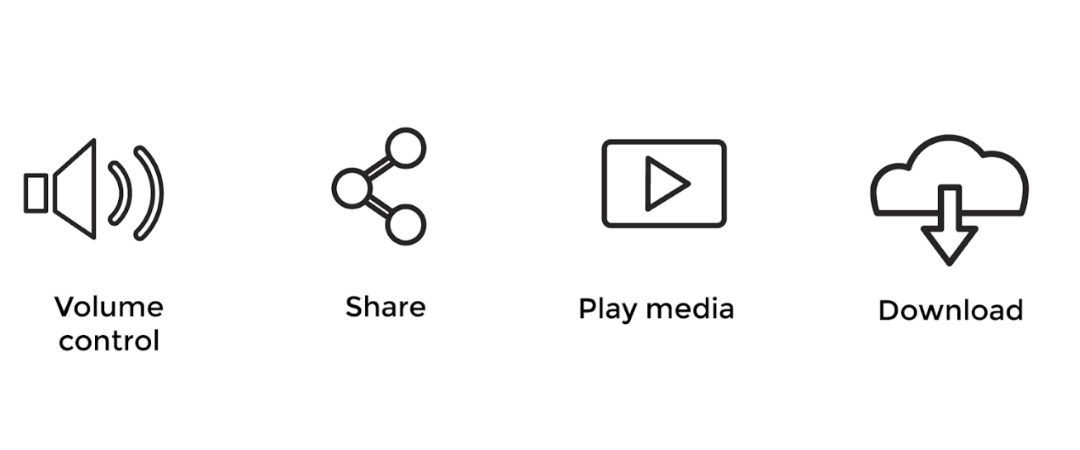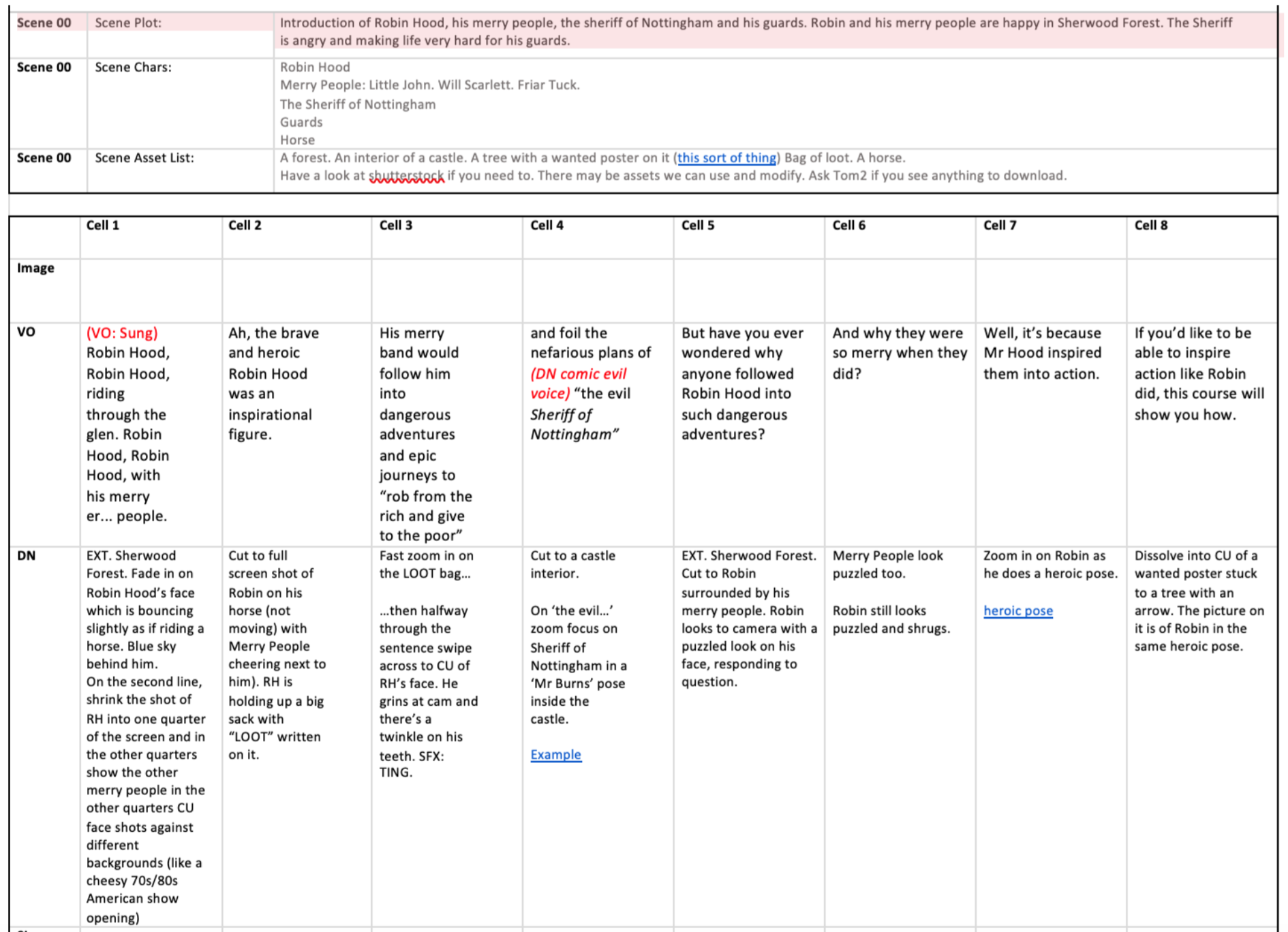.jpg?width=4000&name=Learning%20Blogs%20People%20Banners%20(Gemma).jpg)
When done well, blended learning is about much more than splicing digital with face-to-face. It’s easy to assume the trick is simply taking two or more delivery methods and... boom! You’ve got an interesting programme which looks great... on paper. But then, consider how boring a PowerPoint presentation can be. Technically, that’s blended learning too, right?
Unpicking the term leads you down a much richer path of possibilities. You'll soon find you have a considerable range of learning technologies, modes and channels of communication, synchronous (live) and asynchronous (accessible any time) options at your disposal.
Each element you select (and, of course, when it’s used) has inherent pros and cons, which are exacerbated by how fit-for-purpose it is. If your priority is efficient and effective learning – you should think carefully about which is the best vehicle for the task at hand. They also need to be vetted in-line with their bunk mates – do they complement or conflict? Does the initiative seamlessly sync up or grow increasingly complicated and confusing?
The continuation of learning is also a fundamental part of blended learning – looking beyond the input and formal training to perhaps the most valuable later stages: application, safe practice, and reinforcement.
Blended recognises that retained learning is often not a one-off tick box or event - it’s an ongoing cycle.
Sounds pretty overwhelming, doesn’t it?
Implementing the right blended learning approach
To help you bring this challenge to life, let’s create a realistic situation where you can use a blended programme to deliver on all fronts:
The Challenge:
Your key stakeholder says: ‘The sales team are struggling with presenting virtually and they need a training course as quickly as possible. There isn’t really a budget, but you need to keep costs low and if you can make use of existing materials, even better. Don’t forget, every minute the team is away from their desks costs the company money. Oh, and as much digital content as possible please; it’s quicker and cheaper than getting everyone together in person.’
Your situation:
OK, you have some of the information, but far from enough of it and the pressure is on. So where do you even start and how do you know you’re on the right track?
While it can be tempting to just jump straight on the ideas train and start designing a solution that answers your key stakeholder’s needs, there are some common mistakes you may meet along the way. Here’s how you avoid them:
1. Forgetting that context rules all
Before anything else you need to take a step back and really understand the ‘why’ and the problem which needs solving.
All you know at the moment is there’s an issue (or several) around virtual presenting in sales. You’re not sure wherethis issue has arisen from, if it’s data-driven performance metrics, customer or internal feedback, or comments from the team themselves. You don’t know if it correlates to something else, perhaps the introduction of new software, or changes to onboarding. And you’ve yet to pin down what ‘struggling’ even means – are they struggling with the tech? Anxiety? Product knowledge? Answering customer queries?
This is where the real work starts – the shift from ‘order taker’ to ‘performance consultant’. This isn’t about telling your stakeholder they’re wrong – it’s about you developing a full picture to confirm a learning solution is the answer. If it is, you need to build one which targets the actual problem. This is how you’ll add real business value.
It can be difficult to pitch the necessity for this exercise, especially if your stakeholder is adamant they’ve got the situation pinned and they just need you to crack on. But this is where L&D has a real opportunity to step up – providing healthy challenges and demonstrating credible impact.
Positioned in the right way, you can use your expertise to critically tackle business problems and propel growth. Phil Willcox (Emotion at Work Consulting), advised in a recent webinar that you should always say something along the lines of, ‘Yes, absolutely I can help you with that. But first, can we look at the context so I can understand…’
To help you steer the conversation even more, you can lean on blended learning guru Clive Shepherd’s three L’s:
Learning: What do we crucially need learners to be able to do differently?
Learners: What do we know about the target group?
Logistics: What barriers and opportunities impact the programme?
So let’s apply them to our challenge:
You’ve had a comprehensive discussion with your stakeholder, compiled the associated, relevant data and gathered information from the sales team (perhaps informal interviews or anonymous surveys etc.).
You’ve determined that a learning solution is called for because all sources point to an evidence-based skills gap. Recently, there’s been a sharp increase in demand for digital meetings from prospective customers. The sales team’s experience is predominantly face-to-face and over the phone, and they’re struggling to adapt and figure out how to use the range of functionality offered by web conferencing software. You determine:
Learning: The sales team needs to be able to navigate several versions of web software confidently and competently.
Learners: Of the thirty individuals in sales, six are excelling in presenting, having successfully self-directed their learning and/or thanks to training in previous organisations. There’s a considerable experience range across the other twenty-four: from a few enthusiastic recent hires who are also new to sales, to those who’ve had five+ years in the role and are very reluctant to use technology over meeting in person as it’s how they feel most comfortable.
Logistics: The team are based across two different UK offices (London and Scotland), with ad-hoc home working arrangements. Your ‘low’ budget isn’t fixed, but it’s all about your ability to present a cost-benefit case and demonstrate long-term return on investment. Training needs to complete within the next six-weeks before the company’s busiest period. You need to identify and be conscious of any barriers to learning such as accessibility needs.
2. Not performing a Training Needs Analysis
The three L’s are a great start; they help to isolate key information and encourage you to locate point A (where your learners are starting) and point B (where you need them to get to). The next crucial step is mapping the journey between the two. Essentially, applying what you know to the programme design, priming it for success.
If you don’t consider what constitutes effective stepping stones at each stage, you’re essentially throwing resources at your target, crossing your fingers and hoping for the best. This could result in a lot of effort which fails to deliver objectives.
This is where a Training Needs Analysis (TNA) can come in handy. It adds depth and really compliments the three L’s. It focuses on identifying the skills learners need to effectively perform their jobs, thoroughly evaluates the status of those skills and then identifies the gap. This launches you into that all-important journey exercise.
A TNA isn’t a quick and easy operation (and there are a few different approaches out there), but it will contribute a huge amount of value and help you create an informed plan.
Here’s a simple TNA strategy to answer our challenge:
- Identify the specific skills and knowledge the sales team requires to effectively present virtually, including the level and depth. This could involve speaking with the sales team to understand what they need to be able to do.
- Decide with key stakeholders what demonstrates capability and success and the metrics which will establish this. Taking note of the actions and behaviours of the excelling six team members will be useful here.
- Assess the sales team (twenty-four employees) against the criteria to determine individual competence.
- Highlight and analyse the gaps (perhaps at an individual, team and location level). Look for correlations but don’t forget to interrogate them and stay evidence-based.
- Develop a roadmap to close the gaps.
We explain more about TNAs in our free blended learning eBook if you’d like to learn more.
3. Not considering the logistics
Now you know where you are, where you need to be, and you’ve planned out how to get there – you’ve got the bones of the operation down. The next step is deciding on the most effective and efficient way to deliver your vision.
The danger here is not designing with your logistics at the fore. You might have your heart set on getting in an esteemed subject matter expert to rally the troops – but that expert’s not free for six months, which won’t work with your deadline. A two day classroom course might hit all the key notes but you need to consider the cost of getting everyone together and the significant collective time away from work - especially for staff who generate revenue for the business, such as your sales team.
Similarly, you need to acknowledge the barriers you’ve identified: accessibility, computer literacy, reluctance, lack of manager support, annual leave etc. These will impact what’s practical and possible, so your best bet is to target them pre-launch so your initiative can have the best possible chance.
As part of our challenge, you know there’s an element of ad-hoc home working which might restrict when people can get together – you need to bear in mind impacting personal circumstances too, such as health and childcare. Crucially – avoid making assumptions.
It’s not all doom and gloom when it comes to logistics – it’s also about exploiting the opportunities. If you have six weeks to deliver your training and you know you can tackle the skill gaps with a series of short focus groups and one online session, then you might have time on your side – for comprehensive development, opportunities for application and meaningful evaluation.
With our real-life challenge especially, you’d be foolish not to take advantage of knowledge sharing with the six individuals in sales who really know their stuff. You’ve got the know-how in house, you just need to find a way to distribute it. Your programme also has the potential to be relevant beyond a one-off, perhaps forming part of the sales induction process and refresher iterations.
There might be other teams, customer services for example, who would benefit, or even have their own resources which you can adapt. Before you run off creating everything from scratch, it’s cost-effective and savvy to check what’s already available which might serve your cause.
Whatever the logistics you find yourself navigating, it’s always smart to build agility into your design, which takes your environment and potential risks into account.
4. Going for blanket digital
After working through all the above, you might decide that your blended solution should have significant digital components. You could consider a virtual classroom with simulations and lots of opportunities for practising presenting - the most effective and efficient format for the learning.
This could be bang on the money for our challenge; the core skill needed for your sales team is virtual presenting. It happens online via web software – so the training will be closely aligned to the real-life application.
Tech is a wonderful enabler and has some real advantages such as scalability (reaching a large audience), live and recorded access (available when needed and can be repeated) and allowing people to connect remotely.
But it’s also important to understand its limitations in certain scenarios and what it can’t do. It can be harder, for example, to engage a large group over Zoom and encourage everyone to participate, than if you’re all face-to-face. In person, it’s easier to spot fatigue and anyone who might be falling behind or zoning out – body language is a vital part of communication after all.
One thing’s for sure – facilitating online and classroom learning requires different skill sets and you can’t roll out the same content in the same way successfully across both. How you generate interaction is a prime example.
How collaboration and teamwork take place, online or otherwise, can be down to preference, but it’s hard as a trainer to jump between multiple virtual breakout rooms and observe dynamics. And if in-person simulation or hands-on practical learning is important, you’ll need to think beyond the screen.
With coaching and mentoring, and sensitive subjects, it can be quicker and easier to build rapport and a comfortable atmosphere when you’re physically together. But, of course some people might feel safer having a conversation remotely from home, without their camera on.
The point is, rolling out a blanket digital plan has the same shortcomings as all group work or all self-directed. Is it likely that one method alone can introduce, deliver, explore and provide opportunities for practice? Nope. That’s why you’re putting so much effort into thinking about what’s relevant for the context.
Tech is getting smarter, and advancements in Learning Experience Platforms, Virtual Reality, enthralling eLearning (the list goes on) can be exactly what you need in your solution. Just question if they’re all you need and if they’re not, in the words of David James, ‘A solution looking for a problem.’
5. Leaving Evaluation to the end
Or perhaps, not doing an evaluation at all. If you skip evaluation entirely then we’re missing an opportunity to:
- Demonstrate success to stakeholders via achieved objectives
- Evidence our value to the business as a credible partner
- Monitor and measure the long-term impact
- Learn from our mistakes and improve
- Track if a further intervention is required
Evaluation doesn’t have to be comprehensive and time-consuming, as not every solution warrants regular and rigorous assessment throughout and at the end. It should be appropriate to the situation.
Let’s take our challenge - if you’re going to roll out this programme regularly with new joiners etc. your evaluation needs to be in-depth so you’re confident it’s delivering what you need it to and understand how to tweak if it’s not.
You also don’t want the original issue sneaking back in because your solution was only effective short-term or didn’t cover all the bases. A staged evaluation to check in will be valuable and suggest where refreshers are needed.
As your key stakeholder in our challenge is keen that return on investment (ROI) is evident, it will be worth spending time thinking about how you’ll show this and build it in from the very start. We can really help you here – check out our blog on proving ROI to learn more about backwards design.
For short and sweet programmes which won’t be repeated, these considerations are less important, although presumably you’ll need to demonstrate that the intended outcomes have been met and value added at least to some degree. The main thing to consider? It’s all relative.
Will blended learning solve your L&D challenges?
Blended learning can make all the difference to your L&D strategy as long as you’re getting it right. It’s not just another buzzword or trendy approach doing the rounds of the industry – it’s learner-focused and can generate the ROI your stakeholders so desperately want evidenced.
Our Virtual Presenting Training Challenge
If we look at our real-life challenge you can see that blended learning answers the needs of both your key stakeholder but also those of the sales team.
Doing in-depth analysis before designing a solution identified that you already have skills within the sales team to pull from, not only saving on the budget for subject matter experts but also giving the option of peer-led discussions.
Hosting training online via virtual classrooms solves the issues raised by the remote working logistics and avoiding the cost and disruption of in-person training. It also aligns closet to real-life application as the sales team will be presenting online.
You’ll also be implementing this training to all new joiners, which will mean the solution has longevity. To help make sure that is the case, you’re doing a staged evaluation of this training with regular check-ins to monitor effectiveness.
Now that hybrid, flexible working is the 'new normal', our learning interventions need to reflect these new ways of working and put the learning front and centre once and for all. Blended learning is your answer.
Our free ‘Turning The Tide On Blended Learning’ eBook explores why blended learning is a sure-fire way to implement learning in 2021 and beyond. It covers everything you need to know about blended learning including, why blended is key in a learning solution, why we use storytelling, transfer and retention and much more!
Download your copy right here.





.jpg)
